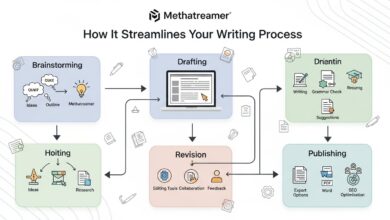Kalibraatio: How Calibration Ensures Quality Control Across Sectors

Calibration, or “kalibraatio” as it’s known in Finnish, plays a crucial role in ensuring quality control across various sectors. This often-overlooked process helps maintain the accuracy of measurements, which can be vital for safety and efficiency. Imagine a world where precision is paramount—whether it’s in manufacturing, healthcare, or scientific research. Each industry relies on calibrated instruments to provide reliable data that informs critical decisions.
As technology advances and industries evolve, the need for effective calibration becomes even more significant. Understanding kalibraatio not only enhances operational effectiveness but also safeguards compliance with regulations and standards that govern many fields today. Let’s dive deep into this essential topic to uncover why calibration matters now more than ever!
The Importance of Calibration in Quality Control
Calibration is a vital process in ensuring quality control across various industries. It directly impacts the accuracy of measurements and equipment performance.
When tools are calibrated, they provide reliable data. This reliability helps businesses avoid costly errors that could arise from incorrect measurements. For manufacturers, precision is key; even slight deviations can lead to significant issues in production.
Moreover, calibration fosters regulatory compliance. Many sectors face strict guidelines requiring regular checks on their instruments. Meeting these standards not only enhances product quality but also builds customer trust.
In addition, consistent calibration practices contribute to operational efficiency. By minimizing discrepancies, teams can focus more on innovation rather than troubleshooting problems caused by faulty equipment.
The importance of calibration extends beyond immediate gains; it lays the groundwork for long-term success and sustainability within any organization striving for excellence in quality control.
Common Industries That Use Calibration
Many industries rely heavily on calibration to maintain standards and ensure accuracy. One of the most prominent is the manufacturing sector. Here, precision is critical for producing components that meet strict specifications.
The healthcare field also values calibration immensely. Medical devices such as blood pressure monitors and imaging machines must be calibrated regularly to guarantee patient safety and accurate diagnoses.
In the aerospace industry, calibration ensures that instruments used in navigation and control systems function correctly. Any deviation could lead to serious consequences.
Laboratories across various fields utilize calibration to uphold scientific integrity. Whether it’s measuring temperature or analyzing chemical concentrations, precise measurements are vital for reliable results.
Even food processing relies on proper calibration of equipment to adhere to safety regulations while maintaining quality products for consumers. Each sector showcases how essential kalibraatio is in upholding standards across diverse applications.
Types of Calibration Standards and Equipment
Calibration standards and equipment come in various forms to meet the diverse needs of different industries. Primary standards are often used as a reference point, providing the highest level of accuracy. These may include physical artifacts like mass weights or voltage references.
Secondary standards serve as intermediaries, offering reliable measurements without requiring extensive resources. These instruments help ensure that everyday tools remain precise over time.
In addition to these, specialized calibration equipment plays a crucial role. For instance, temperature calibrators maintain consistent thermal conditions for sensitive devices. Pressure gauges require their own set of calibration tools to measure accurately under varying atmospheric conditions.
Modern advancements have led to digital solutions, enhancing measurement efficiency and accuracy dramatically. Automated calibration systems ease the workload on technicians while ensuring compliance with stringent industry regulations. This evolution signifies a remarkable shift towards precision in quality control processes across sectors.
The Process of Calibration
Calibration is a systematic process that involves comparing measurement devices to known standards. It starts with selecting the right reference standard, which is essential for accurate results.
Next, the device under test (DUT) is examined. Technicians ensure it’s in proper working order before any adjustments are made. This step often includes checking environmental conditions like temperature and humidity.
Once these factors are aligned, measurements are taken between the DUT and the standard. Discrepancies found during this phase lead to necessary adjustments or corrections.
After calibration, documentation becomes vital. This record provides proof of compliance and serves as a guide for future calibrations.
Regularly scheduled recalibrations keep equipment functioning optimally over time, ensuring ongoing accuracy across various applications.
Benefits of Regular Calibration
Regular calibration is essential for maintaining accuracy in measurements. It helps ensure that instruments function correctly. This reliability leads to higher-quality outputs across various processes.
Another advantage is compliance with industry standards. Many sectors mandate specific calibration frequencies to meet regulations. Adhering to these guidelines can prevent costly penalties and improve overall credibility.
Cost savings also come into play. By identifying issues early through regular checks, businesses can avoid extensive repairs or replacements down the line.
Moreover, consistent calibration fosters trust among customers and stakeholders. When products consistently meet high standards, satisfaction rates rise significantly.
It enhances operational efficiency. With precise instruments at hand, teams can work more effectively without second-guessing their data or results.
Challenges and Solutions for Effective Calibration
Calibration faces several challenges, including the ever-evolving technology landscape. As instruments become more advanced, ensuring accurate measurements can be tricky. Keeping up with these developments demands constant training and updates.
Another challenge is maintaining consistency across different locations or facilities. Variability in environmental conditions can affect calibration results significantly. Standardizing procedures helps mitigate this issue but requires diligent oversight.
Resource allocation often creates obstacles as well. Many organizations struggle to find time and budget for regular calibration without disrupting operations. Implementing a scheduled maintenance plan can ease this burden, allowing for planned downtimes that won’t hinder productivity.
Regulatory compliance adds pressure on businesses to adhere strictly to guidelines. Investing in comprehensive documentation systems ensures all processes meet legal requirements without sacrificing efficiency. By addressing these challenges head-on, companies can establish robust calibration practices that enhance overall quality control.
Future Trends in Calibration Technology
The future of kalibraatio looks promising, driven by rapid technological advancements. Automation is set to revolutionize calibration processes. Smart sensors and IoT integration will enable real-time monitoring, ensuring accuracy without manual intervention.
Artificial Intelligence is also making waves in calibration technology. AI algorithms can analyze data more efficiently, predicting potential issues before they arise. This proactive approach minimizes downtime and enhances overall efficiency.
Additionally, the rise of digital twins offers a new dimension in calibration practices. Virtual replicas of physical systems allow for precise simulations and adjustments, optimizing performance across various sectors.
Sustainability trends are influencing calibration too. Companies are increasingly focusing on eco-friendly practices, utilizing energy-efficient equipment and reducing waste during the calibration process.
As these technologies evolve, businesses will likely see improved quality control measures that not only enhance product reliability but also streamline operations across industries.
Conclusion
Calibration, or kalibraatio, plays a pivotal role in maintaining quality across various sectors. Its significance cannot be overstated, as it ensures that measurements are accurate and consistent. This precision is essential for safety, compliance, and efficiency.
Businesses from diverse industries rely on calibration to uphold standards. Whether it’s manufacturing, healthcare, or aviation, each sector has specific requirements that necessitate regular calibration practices.
Different types of calibration standards and equipment cater to these needs. Understanding the available options helps organizations choose what best suits their operations.
The process of calibration itself can vary but generally involves comparing a measurement device against known standards. Regular checks help identify discrepancies early on.
The benefits of consistent calibration include improved product quality and reduced operational risks. However, challenges such as costs and resource allocation may arise when implementing an effective calibration program.
As technology evolves, so too does the field of calibration. Emerging trends point toward automation and advanced analytics to streamline processes further.
Quality assurance doesn’t happen by chance; it requires diligent effort in areas like kalibraatio to succeed effectively across all sectors engaged in precision-driven activities.



